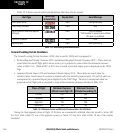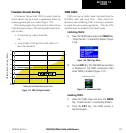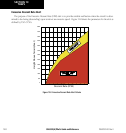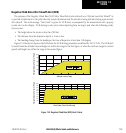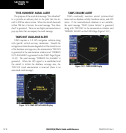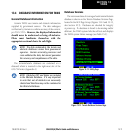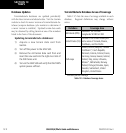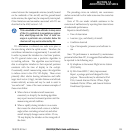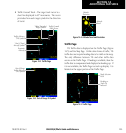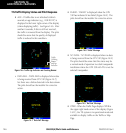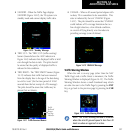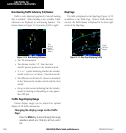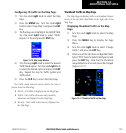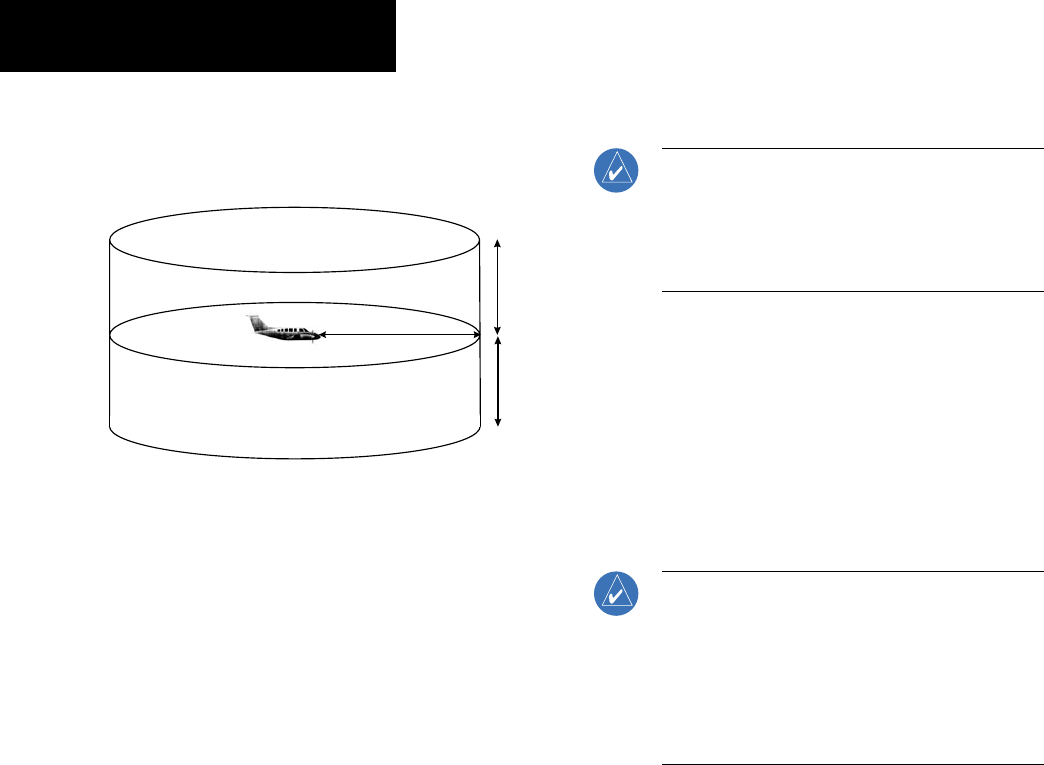
GNS 530(A) Pilot’s Guide and Reference
190-00181-00 Rev. E
14-2
SECTION 14
ADDITIONAL FEATURES
TIS displays up to eight traffic targets within 7 nautical
miles horizontally from 3000 feet below to 3500 feet
above the requesting aircraft (Figure 14-1).
Figure 14-1 TIS Coverage Volume
7.0 nm
3,500 ft
3,000 ft
Not to Scale
TIS Operational Procedures
TIS warns the user with voice and visual traffic
advisories when it predicts an intruder to be a threat.
The user should not start evasive maneuvers using
information from the GNS 530 display or on a traffic
advisory only. The display and advisories are intended
only for assistance in visually locating the traffic, due to
the lack in resolution and coordination ability. The flight
crew should attempt to visually acquire the intruder
aircraft and maintain a safe separation in accordance with
regulatory requirements and good operating practice. If
the flight crew cannot visually acquire the aircraft, they
should contact ATC to obtain any information that may
assist concerning the intruder aircraft. Based on the above
procedures, minor adjustment to the vertical flight path
consistent with air traffic requirements are not considered
evasive maneuvers.
TIS Limitations
NOTE: This section on TIS Limitations is not
comprehensive. Garmin recommends the
user review the TIS Limitations section of the
Aeronautical Information Manual, Section
1-3-5.
TIS is not intended to be used as a collision avoidance
system and does not relieve the pilot responsibility to
‘see and avoid’ other aircraft. TIS should not be used for
avoidance maneuvers during IMC or other times when
there is no visual contact with the intruder aircraft. TIS
is intended only to assist in visual acquisition of other
aircraft in VMC. No recommended avoidance maneuvers
are provided for, nor authorized, as a direct result of a TIS
intruder display or TIS advisory.
NOTE: The main difference between TIS and TCAS
is the source of surveillance data. TCAS uses an
airborne interrogator with a half-second update
rate, while TIS uses the terminal Mode S ground
interrogator and its Data Link to provide about
a 5-second update rate. The range accuracy of
TIS and TCAS is similar.
While TIS is a useful aid to visual traffic avoidance, it
has some system limitations that must be fully understood
to ensure proper use. Many of these limitations are
inherent in secondary radar surveillance. In other words,
the information provided by TIS is no better than that
provided to ATC. TIS only displays aircraft with operating
transponders installed.
TIS relies on surveillance of the Mode S radar, which
is a ‘secondary surveillance’ radar similar to the ATCRBS.
TIS operation may be intermittent during turns or other
maneuvering. TIS is dependent on two-way, ‘line-of-
sight’ communications between the aircraft and the
Mode S radar. When the structure of the client aircraft



